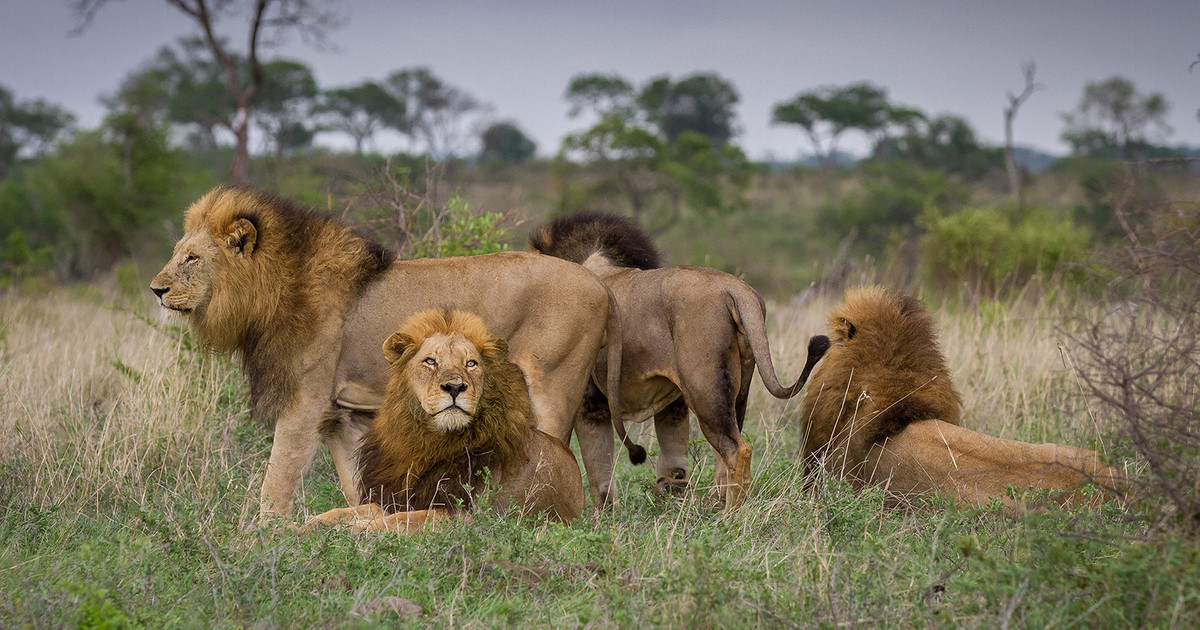Re: Lions On The Loose
Posted: Fri Sep 29, 2023 11:52 am
29 September 2023 - AFRICA GEOGRAPHIC
Dispersing male lions are the genetic lifeline for Africa’s rapidly diminishing free-roaming lion populations. They leave the pride at about two to three years of age - often forced out by the pride male/s - to team up with other outcast males to find territory with food and females. When you hear about lions that have ‘escaped’ from protected areas it’s often dispersing young males doing what nature intended. Many don't get to sire future generations - this is nature’s plan to ensure that only the fittest survive to strengthen the gene pool.
There are plenty of natural reasons why many dispersing male lions don't make the cut - but, increasingly, humankind is a significant factor. Human-wildlife conflict is probably the biggest threat they face - humans killing lions that threaten their livestock. And who can blame Africa’s rural villagers? They are following the example set by others across this precious planet. Another is the removal of habitat and prey species by humans as we ‘develop’ the remaining wild areas and create islands of our protected areas. A further threat is trophy hunters killing free-roaming male lions as they disperse. We have got to the point where every dispersing male lion needs to be protected. Killing them off for fun and ego is not conservation, no matter how powerful and aggressive the trophy-hunting lobby is.
This is where you come in: Whatever the reasons that prevent male lions from playing their intended role, scientists need more information about their dispersal habits. Team Africa Geographic has dug deep into our pockets to sponsor a lion collar; you can too. Perhaps team up with friends or colleagues, or donate even just a small amount - it all helps. Please join us to empower researchers to better protect Africa’s iconic free-roaming lions.
Keep the passion
Simon Espley – CEO
Dispersing male lions are the genetic lifeline for Africa’s rapidly diminishing free-roaming lion populations. They leave the pride at about two to three years of age - often forced out by the pride male/s - to team up with other outcast males to find territory with food and females. When you hear about lions that have ‘escaped’ from protected areas it’s often dispersing young males doing what nature intended. Many don't get to sire future generations - this is nature’s plan to ensure that only the fittest survive to strengthen the gene pool.
There are plenty of natural reasons why many dispersing male lions don't make the cut - but, increasingly, humankind is a significant factor. Human-wildlife conflict is probably the biggest threat they face - humans killing lions that threaten their livestock. And who can blame Africa’s rural villagers? They are following the example set by others across this precious planet. Another is the removal of habitat and prey species by humans as we ‘develop’ the remaining wild areas and create islands of our protected areas. A further threat is trophy hunters killing free-roaming male lions as they disperse. We have got to the point where every dispersing male lion needs to be protected. Killing them off for fun and ego is not conservation, no matter how powerful and aggressive the trophy-hunting lobby is.
This is where you come in: Whatever the reasons that prevent male lions from playing their intended role, scientists need more information about their dispersal habits. Team Africa Geographic has dug deep into our pockets to sponsor a lion collar; you can too. Perhaps team up with friends or colleagues, or donate even just a small amount - it all helps. Please join us to empower researchers to better protect Africa’s iconic free-roaming lions.
Keep the passion
Simon Espley – CEO


